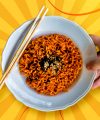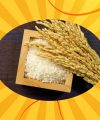Table Of Content
- Why Korean Stews Are Perfect for Winter
- What Are The Top 5 Korean Stews To Warm You Up In Winter?
- 1. Kimchi Jjigae
- What Are The Ingredients Needed To Make Kimchi Jjigae?
- What Is The Step-by-Step Recipe Of Kimchi Jigae?
- What Are The Health Benefits Of Kimchi Jjigae?
- 2. Doenjang Jjigae
- What Are The Ingredients Needed For Doenjang Jjigae?
- What Is The Step-by-Step Recipe Of Doenjang Jjigae?
- What Are The Health Benefits Of Doenjang Jjigae?
- 3. Sundubu Jjigae
- What Are The Ingredients Needed For Sundubu Jjigae?
- What Is The Step-by-Step Recipe For Sundubu Jjigae?
- What Are The Health Benefits Of Sundubu Jjigae?
- 4. Budae Jjigae
- What Are The Ingredients Needed For Budae Jjigae?
- What Is The Step-by-Step Recipe For Budae Jjiage?
- What Are The Health Benefits Of Budae Jjigae?
- What Are Some Important Tips for Cooking Korean Stews at Home?
- Nutritional Insights Of Korean Stews In Winter
- What Are Some Common Mistakes You Must Avoid?
- Step-By-Step Guide To The Best Korean Stews To Keep You Warm In Winter Explained
Korean cuisine is renowned for its comforting stews (jjigae) and soups (guk and tang), which bring warmth and nutrition to the table, especially during the harsh winter months.
These dishes are more than just meals. They are part of Korea’s cultural identity. These Korean stews blend bold flavors and fermented ingredients. This gives you the best health benefits.
Additionally, they also use seasonal produce and turn it into nourishing one-pot wonders.
If you’re looking for hearty dishes that can warm you from the inside out, Korean stews are a must-try.
In this guide, I will walk you through the best Korean stews for winter. I wil also talk about their origins and health benefits.
Wait, you guys! I have something more for you! I will also give you a simple step-by-step guide to prepare these dishes at home. Exciting, right?
Why Korean Stews Are Perfect for Winter

Korean stews are truly hearty and filling. These dishes are a true delight, as they are packed with protein.
Additionally, you will also find a variety of vegetables and the rich, complex flavors that come from fermentation.
They are also incredibly nutrient-rich. These soups often incorporate ingredients like:
- Kimchi
- Tofu
- Seafood
- Robust bone broths
Well, I don’t need to emphasize how these contribute to both taste and health.
Also, you will get many immune-boosting benefits when you have these stews regularly. These include ingredients such as garlic, chili, and other fermented elements.
So, these elements not only enhance flavor but also support digestion and overall immune health.
One of the best aspects of these meals is their adaptability. This makes them customizable for all kinds of dietary preferences.
So, even if you follow a vegetarian, seafood-based, or traditional meat-centered diet. The Korean stews are always at your service!
What Are The Top 5 Korean Stews To Warm You Up In Winter?
1. Kimchi Jjigae

Perhaps the most iconic Korean stew, kimchi jjigae, is spicy, tangy, and deeply satisfying. Made with fermented kimchi, pork or tuna, tofu, and vegetables, it is Korea’s ultimate comfort food.
What Are The Ingredients Needed To Make Kimchi Jjigae?
- 2 cups aged kimchi
- 200 g pork belly (or canned tuna)
- 1 block tofu, sliced
- 1 onion, sliced
- 2 spring onions, chopped
- 2 cups anchovy broth (or water)
- 1 tbsp gochujang
- Gochugaru, 1 tbsp
- 2 cloves garlic, minced
- 1 tsp sesame oil
What Is The Step-by-Step Recipe Of Kimchi Jigae?
1. Firstly, I heat sesame oil in a pot and sauté pork belly with garlic until browned.
2. Then, I add kimchi and stir-fry for 3–4 minutes to release its flavor.
3. I follow this by pouring in anchovy broth and bringing it to a boil.
4. Of course, I immediately stir in gochujang and gochugaru.
5. Then I add tofu and onions, and simmer for 15 minutes.
6. Finally, I garnish with spring onions before serving hot with steamed rice.
What Are The Health Benefits Of Kimchi Jjigae?
The dish is rich in probiotics. You know the credit goes to the fermented goodness of kimchi. It also offers a high protein content. You can derive it from either pork or tofu.
Therefore, it makes a versatile choice for various diets.
Additionally, the inclusion of garlic and chili provides immune-boosting properties. This enhances both flavor and health benefits.
2. Doenjang Jjigae

Doenjang jjigae is Korea’s earthy, umami-rich soybean paste stew. It’s a staple in Korean households, and for good reason.
So, Doejang Jjigae offers numerous health benefits and is extremely easy to make. It is often served with a bowl of rice and side dishes.
What Are The Ingredients Needed For Doenjang Jjigae?
- 2 tbsp doenjang (fermented soybean paste)
- 2 cups anchovy or vegetable broth
- 1 zucchini, sliced
- 1 onion, sliced
- 100 g tofu, cubed
- 1 potato, cubed
- 2 mushrooms (shiitake or oyster)
- 2 cloves garlic, minced
- 1 green chili, sliced
What Is The Step-by-Step Recipe Of Doenjang Jjigae?
1. Boil broth in a pot and dissolve doenjang into it.
2. Add potatoes and cook until half tender.
3. Add zucchini, onion, mushrooms, and garlic.
4. Stir in tofu and green chili.
5. Simmer for 15–20 minutes until flavors deepen.
What Are The Health Benefits Of Doenjang Jjigae?
This food is rich in probiotics and essential amino acids. This makes it an excellent choice for individuals seeking to enhance their gut health.
Not only is it low in calories, but it’s also nutrient-dense. So, this means you can enjoy its benefits without feeling guilty.
Overall, it’s an excellent option for supporting digestion and maintaining a healthy lifestyle.
3. Sundubu Jjigae

This fiery, bubbling stew is made with silken tofu (sundubu), vegetables, and often seafood or pork. It’s famous for its creamy texture and bold flavors.
What Are The Ingredients Needed For Sundubu Jjigae?
- 1 pack silken tofu
- 200 g clams or shrimp (or pork belly)
- 2 cups anchovy broth
- 1 tbsp gochujang
- 1 tbsp gochugaru
- 1 egg
- 2 garlic cloves, minced
- 1 spring onion, chopped
- 1 tsp sesame oil
What Is The Step-by-Step Recipe For Sundubu Jjigae?
1. Heat sesame oil in a clay pot and sauté garlic.
2. Add clams or pork and cook until slightly browned.
3. Stir in gochujang and gochugaru for 1–2 minutes.
4. Pour in broth and bring to a boil.
5. Add silken tofu by spoonfuls, simmer gently.
6. Crack an egg into the bubbling stew before serving.
What Are The Health Benefits Of Sundubu Jjigae?
Tofu and eggs are excellent sources of high-quality protein, making them a great choice for those looking to increase their protein intake.
Additionally, the combination of chili and garlic not only adds flavor but also helps boost immunity, keeping your body healthier and more resilient.
Furthermore, the silky texture of this dish makes it easy to digest, ensuring that you can enjoy it without any discomfort.
4. Budae Jjigae

A fusion dish that emerged after the Korean War, budae jjigae combines traditional flavors with Western ingredients like spam, sausages, and baked beans. It’s hearty, fun, and great for sharing.
What Are The Ingredients Needed For Budae Jjigae?
- 200 g spam or sausage slices
- 100 g tofu, cubed
- ½ pack instant noodles
- 1 cup kimchi
- 1 tbsp gochujang
- soy sauce, 1 tbsp
- 1 onion, sliced
- 2 cups chicken or anchovy broth
- Optional: cheese slices, baked beans, rice cakes
What Is The Step-by-Step Recipe For Budae Jjiage?
1. Arrange spam, tofu, kimchi, and sausages in a wide pot.
2. Add gochujang, soy sauce, and onion.
3. Pour in broth and bring to a boil.
4. Add noodles and cheese before serving.
What Are The Health Benefits Of Budae Jjigae?
This dish is packed with energy and is perfect for those chilly days when you need something warm and satisfying.
You can easily customize it by adding a variety of vegetables, which not only enhances its flavor but also boosts its nutritional value.
It’s comforting and makes for a fantastic option when you’re preparing meals for a group, bringing everyone together around the table.
What Are Some Important Tips for Cooking Korean Stews at Home?

- Invest in a Korean clay pot (ttukbaegi): Retains heat for longer.
- Use quality stock: Anchovy, kelp, or beef stock elevates flavor.
- Balance spice levels: Adjust gochujang and gochugaru for your taste.
- Always serve with rice: Stews are meant to be paired with steamed rice.
- Add kimchi for depth: Even a spoonful enhances umami.
Nutritional Insights Of Korean Stews In Winter

- Kimchi Jjigae is not only delicious but also high in probiotics, making it beneficial for gut health.
- Doenjang Jjigae, rich in protein, offers support for digestive health and makes a satisfying meal.
- Sundubu Jjigae is a light yet protein-packed option that is great for boosting immunity.
- Galbitang stands out for being rich in both protein and collagen, which can support bone health.
- Budae Jjigae is a high-calorie comfort meal that should be enjoyed in moderation to maintain a balanced diet.
What Are Some Common Mistakes You Must Avoid?

Here are some tips to keep in mind when cooking:
1. Skipping broth prep: Don’t just rely on water; it can be pretty bland. A well-prepared broth adds so much depth to your dish.
2. Overcooking tofu: Be careful not to overdo it with the tofu. If it gets too mushy, it loses its texture and can really fall apart.
3. Not balancing saltiness: Remember that ingredients like kimchi and fermented pastes already pack a salty punch, so keep that in mind when seasoning.
4. Overloading ingredients: Less is often more when it comes to stews. Focus on a few key flavors instead of cramming in too many ingredients; it lets each one shine.
Happy cooking!
Step-By-Step Guide To The Best Korean Stews To Keep You Warm In Winter Explained
Korean stews are more than just recipes, they are traditions that bring warmth, health, and comfort to cold winter days.
From the fiery kimchi jjigae to the rich galbitang, each stew carries history and cultural value.
By learning to cook these stews at home, you not only warm your body but also experience a slice of Korean culinary heritage.
Whether you’re looking for a spicy kick, a hearty broth, or a fusion feast, there’s a Korean stew for every mood this winter.
So, stock up on gochujang, tofu, and fresh vegetables, and bring the essence of Korean winter comfort into your own kitchen.
DON’T MISS THESE:












